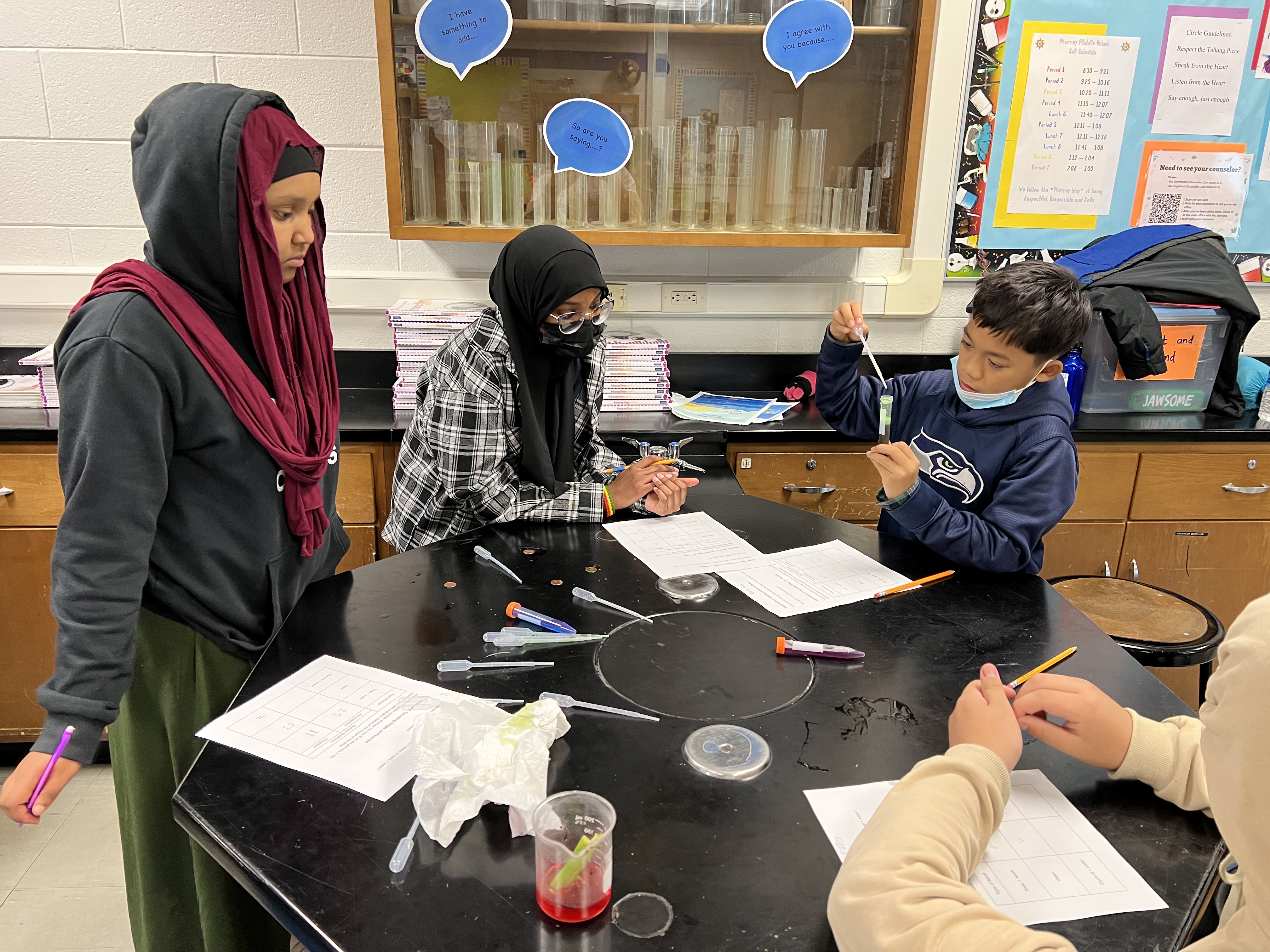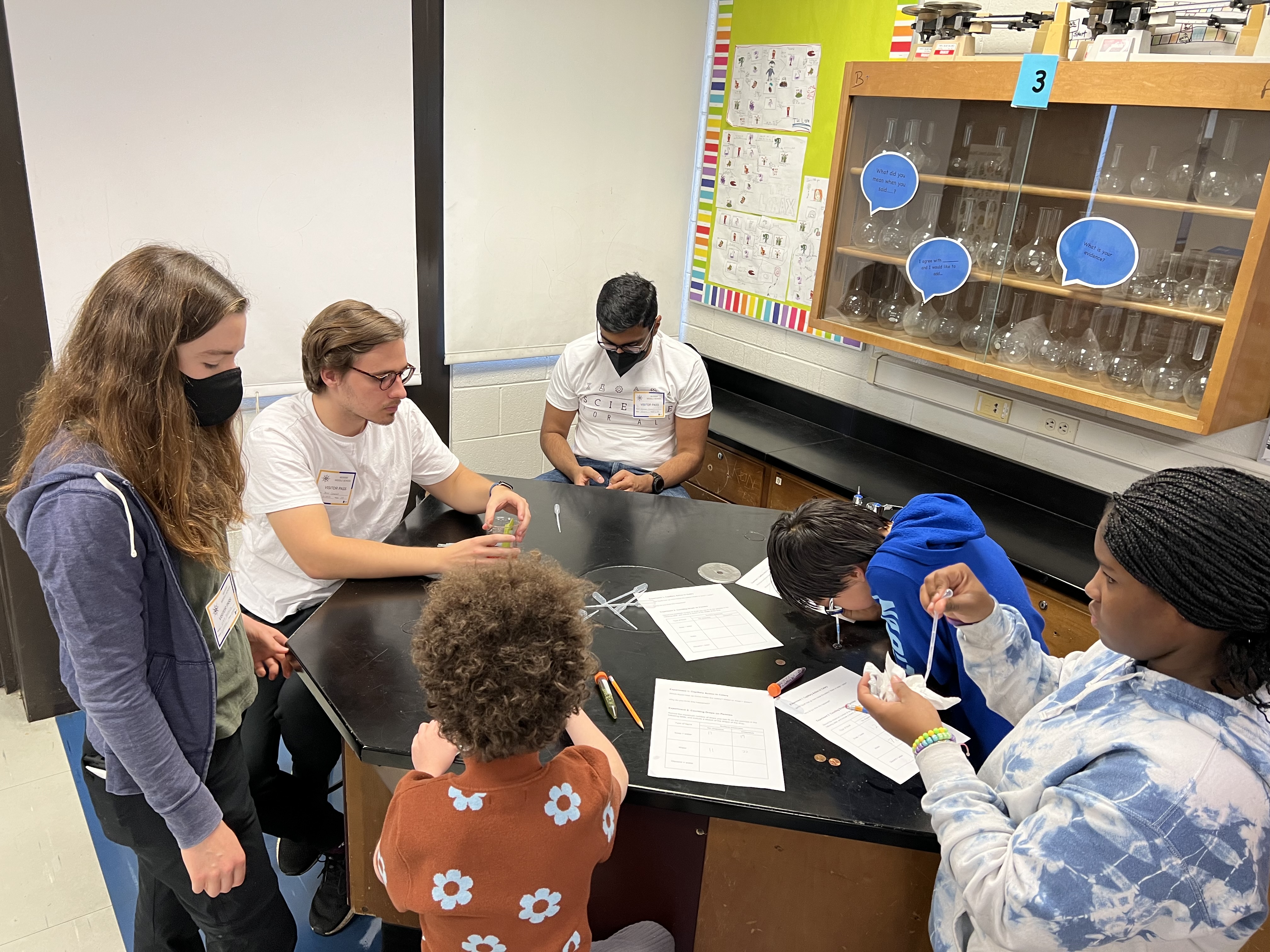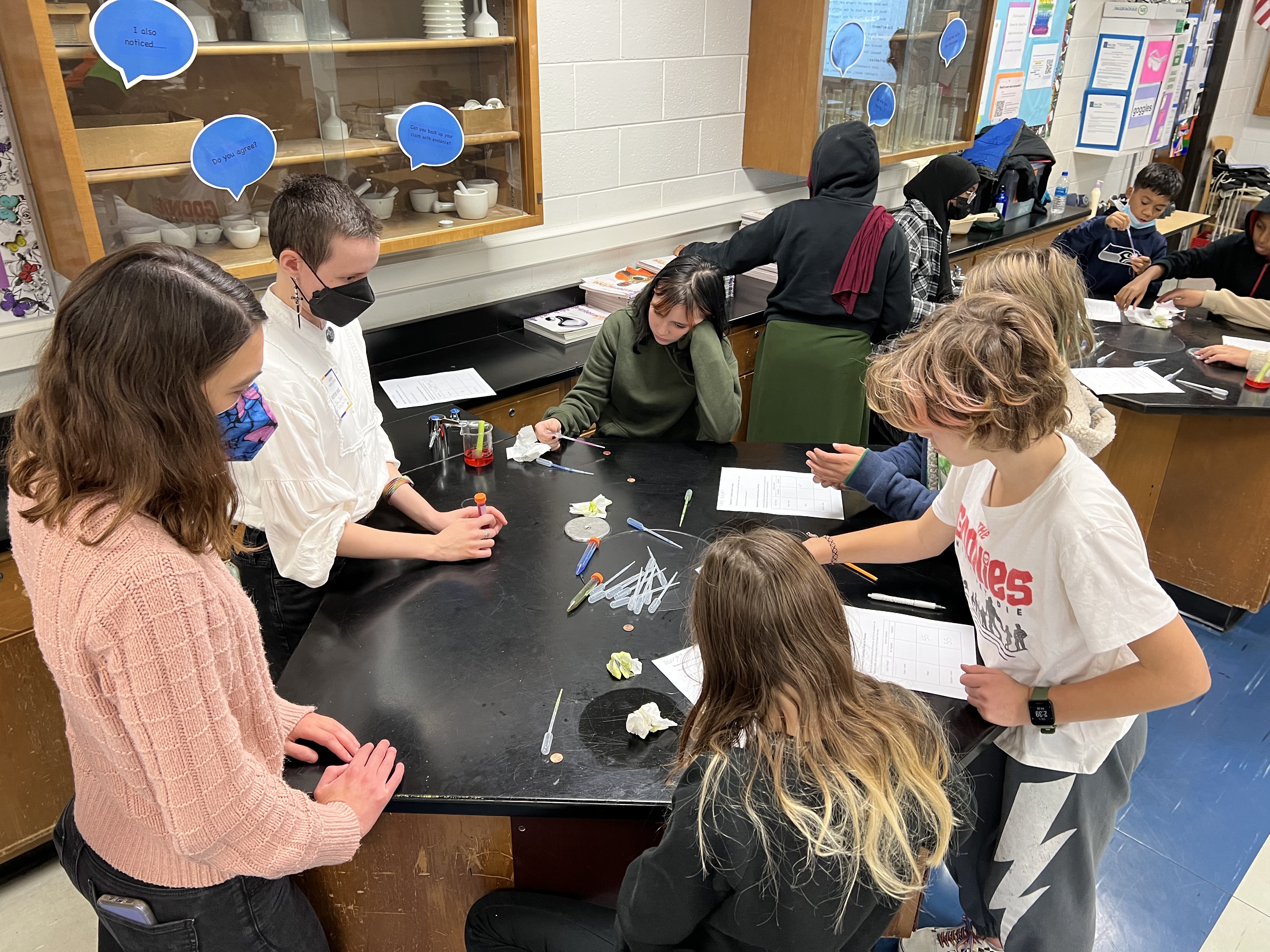October 2022 Visit on Friday, October 28, 2022
Experiment Leads: Joe Vallin & Daniel Krajovic
This year, the Science for All team at Murray Middle School will be partnering with Mrs. Crowley’s 6-8th grade Environmental Science class. As a way to complement the subject matter of the class for our first outreach event of the year, we decided to perform two experiments relating to trees and how they transport water. Coincidentally, the class had just wrapped up a unit studying trees! Our presentation, entitled “Surface Tension: How Plants Transport Water,” focused on introducing the students to the concepts of surface tension, cohesion, and adhesion which we then used to explain two different mechanisms that plants use to transport water. The first mechanism, which plants employ when they want to take in water, is capillary action. Plants use this phenomenon to absorb water into their roots from the soil, after which it is transported to the rest of the plant via the xylem for use in photosynthesis, nutrient transport, and structural support. To illustrate this phenomenon, we performed an experiment where we measured the distance that colored water could travel up a celery stalk in 30 minutes, either with or without soap mixed in. We were able to show the students that because water with soap has decreased surface tension, it does not travel as far up the xylem of the celery stalk. We discussed with the students how surface tension is the force that holds the water molecules together at its surface, (similar to how penguins at the edge of a penguin huddle like to pack into the center on a cold, windy night!) and this allows the water to hold itself together as the capillary force pulls the water up the celery stalk.
The second water-transport mechanism we discussed was how plants synthesize special coatings on their leaves to shed water after a rainfall. In order to prevent excess water from clinging to the leaves and collapsing the plant under its weight, this waxy coating causes water to bead up and roll off of the leaf. We introduced the students to the concept of hydrophobic (water-hating) and hydrophilic (water-loving) surfaces and how liquid drops placed on these surfaces have a large contact angle on hydrophobic surfaces but a smaller contact angle on hydrophilic surfaces. The contact angle is the angle the droplet makes with the surface where they touch. We then performed an experiment to show hydrophobic/hydrophilic surfaces as well as the surface tension of the liquid affects the ability of the liquid to “bead up” (which corresponds to a higher contact angle). Students were tasked with measuring how many drops of water they could fit on the surface of a penny before it ran off the sides of the coin. They were given coins with two different surfaces: a normal uncoated surface (more hydrophilic) and a surface coated with chapstick (more hydrophobic). They were also given water solutions with different levels of surface tension: plain water (high surface tension), water with glycerol (medium surface tension), and water with soap (low surface tension). The students were able to see that hydrophobic surfaces and liquids with high surface tension create a higher contact angle and allow for more liquid to “fit” on the surface of the coin because it can bead up more. When water beads up it is more likely to roll off surfaces at angles like the leaves of a plant, protecting it from being crushed by the weight of the water. Overall the students enjoyed this experience, especially competing with each other to see how many drops of water they could fit on their coins!


